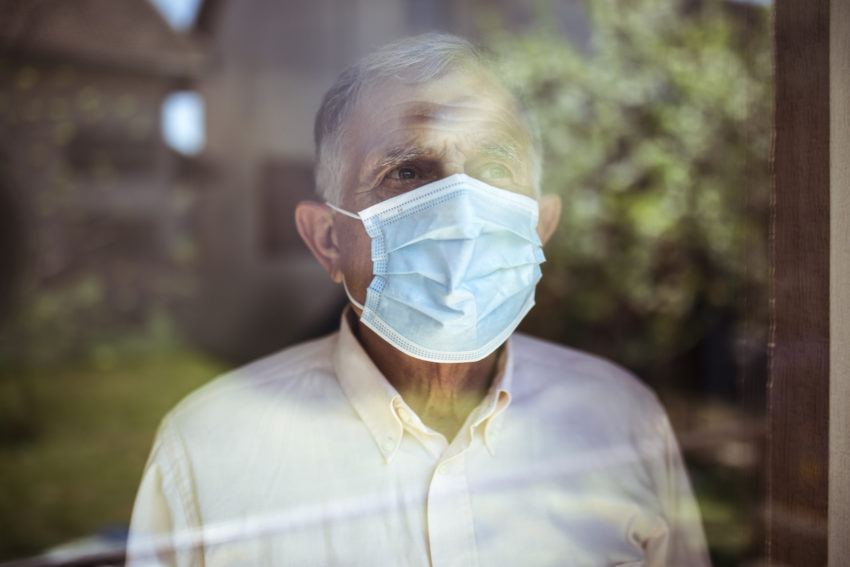
Share On Social!
As healthcare providers and medical institutions move forward with COVID-19 vaccine distribution, vaccine hesitancy continues to be an issue.
Public acceptance of the COVID-19 vaccine is important because it’s the safest and best way to reach herd immunity and end the pandemic once and for all.
Unfortunately, that will only happen once at least 75 to 85% of the population is vaccinated and immune, according to experts like Dr. Anthony Fauci, the nation’s leading infectious disease expert.
Vaccine hesitancy is especially prevalent in communities of color, like Latino and Black communities, who may be distrustful of the government and the process behind the vaccine.
What are ways that we can build trust among these communities and address vaccine hesitancy?
Let’s take a look.
1. Use Clear and Accessible Messaging
The first way we can build trust is by using clear and accessible messaging.
Simple language that avoids difficult terminology will help with understanding.
“Use messages tailored to the health literacy and numeracy levels of the target audience. Remove difficult biological or chemical terms from messages and explain terms that have technical meanings (e.g., whether “significant” refers to statistical or substantive significance),” according to the National Academies of Sciences, Engineering, and Medicine.
Consistency ensures that readers aren’t confused by conflicting messages.
“Clarity and transparency and consistency in the message is very important,” said Ayman El-Mohandes, the dean of CUNY’s public health graduate school, according to Inside Higher Ed. “We have found that in many instances people are less certain of accepting a message if there are conflicting messages and if they feel like decisions are being made without full transparency and without the community understanding the science base or the evidence base.”
Another important way for COVID-19 vaccine messaging to be accessible is by making sure the information is reaching all audiences, especially those without access to the internet and don’t speak English.
“Use a variety of communications channels to reach vulnerable populations, such as town hall meetings, special community events, or faith-based gatherings. To reach individuals with limited English literacy skills, translate health messages into languages other than English or use visuals to communicate information. Consider ways to reach those who cannot attend public meetings or who have limited broadband services,” according to the National Academies.
2. Be Credible and Transparent
Many people don’t trust the COVID-19 vaccine because of misinformation.
It’s important that we provide credible and transparent information about the vaccine and not make any claims that aren’t verified by medical experts.
 “Acknowledge what is known and unknown about the vaccines. Greater transparency about the vaccine authorization and distribution process, for example, could potentially address concerns about the politicization of the process,” according to the National Academies.
“Acknowledge what is known and unknown about the vaccines. Greater transparency about the vaccine authorization and distribution process, for example, could potentially address concerns about the politicization of the process,” according to the National Academies.
Myths and misinformation about COVID-19 should not be repeated, but public health leaders can address them if doing so correctly.
“Repeating false claims and misinformation risks amplifying and strengthening them. In situations in which addressing misinformation is unavoidable, warn recipients before confronting them with misinformation (e.g., ‘the following claim is misleading…’) and emphasize the facts over the misinformation. Practitioners may also use a pivot approach to divert those who are vaccine skeptical to concerns about the risk of disease,” according to the National Academies.
3. Uplift Local Leaders in Communities of Color
One of the most important ways to build trust and address vaccine hesitancy is through uplifting local leaders in communities of color, like the Latino community.
Latino and Black adults are more hesitant than white adults to get a COVID-19 vaccine, so addressing concerns within these communities is especially important.
“Because of the positive correlation between Latinx identity and vaccine intention, and because Latinx elected officials in one’s community are more likely to be trusted than white elected officials, efforts to promote uptake should leverage voices from within the Latinx community and should reinforce the notion that vaccination is a responsibility that helps the Latinx community at large,” according to COVID Collaborative.
Some programs, like the National Institute of Health’s COVID-19 Prevention Network, are trying to reach communities of color through religious ambassadors.
 “To increase participation by communities of color, the network has also created a faith initiative, which includes ‘faith ambassadors’ and more than 30 clergy-consultants from the Black, Latinx and American Indian/Alaska Native communities to help get the word out,” according to NPR.
“To increase participation by communities of color, the network has also created a faith initiative, which includes ‘faith ambassadors’ and more than 30 clergy-consultants from the Black, Latinx and American Indian/Alaska Native communities to help get the word out,” according to NPR.
Trusted, culturally competent leaders can come from a variety of local community organizations.
“Community organizations are closer to their audiences, know how to effectively tailor information, and, most importantly, have trusted leaders who can be effective spokespersons. Local governments can activate faith-based networks, existing community health worker programs, or local advocacy and activism groups (such as organizers of get-out-the-vote efforts or the census or neighborhood coalitions formed to improve walkability or green spaces) for specific vaccine efforts,” according to the National Academies.
Having ambassadors to address vaccine questions and concerns helps calm fears that the vaccine wasn’t developed with these vulnerable populations in mind.
“There’s a fair amount of vaccine hesitancy out there, particularly among brown and Black communities,” said Donald Alcendor, an associate professor of microbiology and immunology at Meharry Medical College, a historically Black medical school, according to Inside Higher Ed. “They want their questions answered, and they want their questions answered by someone who looks like them, if you know what I mean.”
4. Build Cultural Humility
Cultural humility is another key to addressing vaccine hesitancy.
Dr. Eliseo J. Pérez-Stable, director of NIH’s National Institute on Minority Health and Health Disparities, said that cultural humility goes beyond cultural awareness.
“Crucially, to gain the trust of many different groups in the U.S., public health messengers must also demonstrate not just cultural awareness, but ‘cultural humility.’ Even well-intended programs sometimes miss the mark,” said Pérez-Stable, according to NPR.
Cultural humility means being aware of how history and culture intersect to affect people’s beliefs, especially when it comes to historical trauma and wrongdoing, according to the Hogg Foundation for Mental Health.
“It is not enough to think about one’s own values, beliefs, and social position within the context of the present moment. In order to practice true cultural humility, a person must also be aware of and sensitive to historic realities like legacies of violence and oppression against certain groups of people,” according to the Hogg Foundation for Mental Health. “For example, the Public Health Service’s Syphilis Experiment at Tuskegee serves as a tragic reminder of how African Americans have been historically deprived of adequate healthcare and have experienced abuse and disrespect in the name of clinical research.”
5. Be Respectful and Empathetic
The final way to address vaccine hesitancy is to approach hesitant communities with respect and empathy.
Dismissing people’s concerns, even if rooted in misinformation or conspiracy, may invalidate or upset your audience.
“Ensuring that people feel heard is important because if people do not feel heard, they are unlikely to listen. Listen to people’s concerns, rephrase and restate those concerns, and present relevant new information with empathy,” according to the National Academies.
It is better to avoid passing judgement and be a helpful source that can answer questions and concerns about a COVID-19 vaccine.
“Avoid judgmental language when talking about or to people who are worried about taking a vaccine. Acknowledge their concern or skepticism and offer to answer their questions,” according to de Beaumont.
Who is Working on Addressing Vaccine Hesitancy?
There are several public health organizations hard at work to build trust in vulnerable communities and address vaccine hesitancy.
One of those organizations is the National Alliance for Hispanic Health.
Check out their new bilingual infographic campaign on what your friends, family, patients, and neighbors need to know about the COVID-19 vaccine.
The Public Health Communications Collaborative also has resources on how public health experts can fight misinformation and communicate about the vaccine in efficient ways.
Here at Salud America!, we’ve also started a campaign to help slow the spread of COVID-19 and address people’s questions and concerns about practicing safety precautions.
Share our Juntos, We Can Stop COVID-19” digital communication campaign in English or Spanish to help Latino families and workers take action to slow the spread of coronavirus, including getting the vaccine when available.
The #JuntosStopCovid campaign features culturally relevant fact sheets, infographics, and video role model stories to encourage Latinos to practice safe public health behaviors.
By The Numbers
142
Percent
Expected rise in Latino cancer cases in coming years



